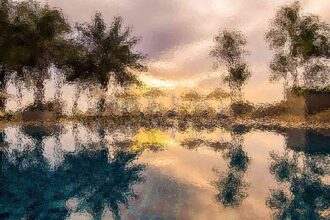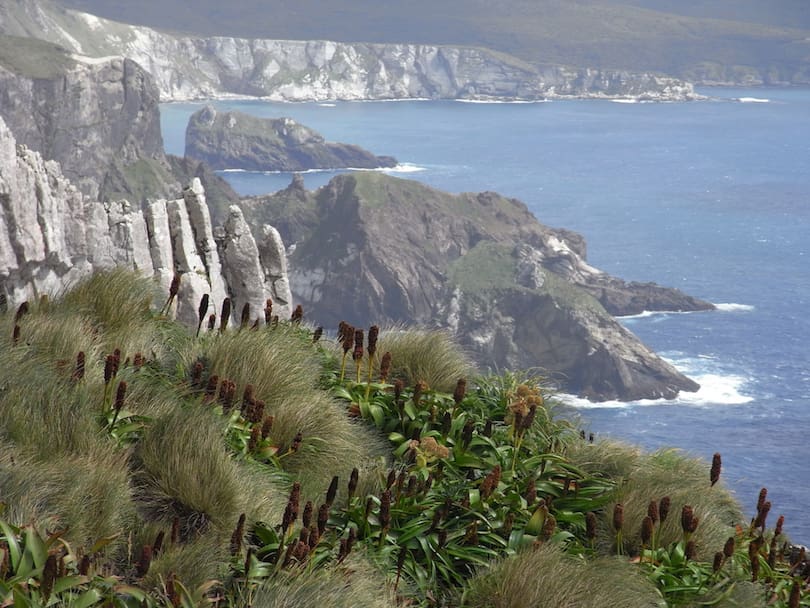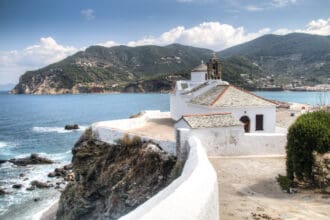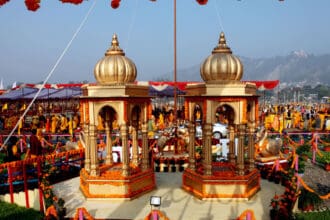Jag Mandir, also known as the Lake Garden Palace, is a historic architectural marvel situated on the picturesque Lake Pichola in Udaipur, India. It has been a symbol of grandeur and elegance for centuries, attracting tourists from all around the world. This article delves into the rich history, architectural wonders, natural beauty, famous events, restoration efforts, and more that make Jag Mandir a must-visit destination in Udaipur.
1. Introduction
Nestled amidst the serene waters of Lake Pichola, Jag Mandir stands as a testimony to the opulence and artistic finesse of the bygone era. Built during the 17th century, this magnificent palace served as a summer resort and pleasure palace for the royal families of Mewar. It offers a captivating blend of Mughal and Rajput architectural styles, making it a visual delight for history enthusiasts and architecture aficionados alike.
2. Historical Significance of Jag Mandir
Jag Mandir holds great historical significance in India’s cultural heritage. It was initially built to provide refuge to Prince Khurram, later known as Emperor Shah Jahan, during a period of political unrest. The prince drew inspiration from the palace’s elegant design and incorporated elements of its architecture into the construction of the iconic Taj Mahal. This makes Jag Mandir a precursor to one of the Seven Wonders of the World.
3. Architectural Marvels of Jag Mandir
The Grand Entrance
As you approach Jag Mandir, you are greeted by a grand entrance adorned with intricately carved marble arches and stunning sculptures. The ornate craftsmanship reflects the skill and dedication of the artisans of that era, leaving visitors awestruck by the sheer beauty of the palace.
The Central Courtyard
Stepping inside, the central courtyard mesmerizes with its exquisite marble flooring and a beautiful garden. The courtyard is adorned with elegant fountains and surrounded by arched corridors. This space served as a venue for grand celebrations and lavish events hosted by the royal families.
Gul Mahal
One of the standout features of Jag Mandir is Gul Mahal, also known as the Flower Palace. This elegant structure showcases delicate murals, intricate mirror work, and vibrant frescoes depicting scenes from mythology and royal life. It served as a private chamber for the rulers, providing them with a serene and aesthetically pleasing environment.
Kunwar Pada ka Mahal
Kunwar Pada ka Mahal, named after Kunwar Pada, a prince who sought solace in this part of the palace, is another architectural gem within Jag Mandir. Its design showcases the fusion of Rajput and Mughal architectural elements, featuring elegant arches, domes, and vibrant interiors.
Darikhana
The Darikhana, or the Banquet Hall, stands as a testament to the grandeur and hospitality of the Mewar rulers. It boasts intricately carved columns, expansive halls, and stunning chandeliers. The hall served as a venue for lavish feasts and social gatherings, offering an immersive experience of the royal lifestyle.
4. Natural Beauty Surrounding Jag Mandir
Lake Pichola
Surrounded by the pristine waters of Lake Pichola, Jag Mandir offers a breathtaking view of the tranquil lake and its picturesque surroundings. The shimmering waters and the distant Aravalli hills create a captivating backdrop, making it a perfect spot for capturing memorable photographs and enjoying the serenity of nature.
Floating Garden
Within the premises of Jag Mandir, you will discover a floating garden that adds to the charm and uniqueness of this palace. The garden is meticulously designed, featuring vibrant flowers and lush greenery. It provides a soothing and refreshing ambiance, where visitors can relax and immerse themselves in the beauty of nature.
Marble Elephant
One of the highlights of the courtyard garden is a magnificent marble elephant sculpture. Crafted with utmost precision, this sculpture serves as a reminder of the artistic prowess of the craftsmen of that era. Visitors can marvel at its grandeur and capture awe-inspiring photographs.
Courtyard Garden
The courtyard garden of Jag Mandir is a well-maintained oasis of tranquility. It showcases a harmonious blend of flora and fauna, with beautiful flowers, fragrant shrubs, and towering trees. Strolling through this garden is a serene experience that allows visitors to appreciate the finer details of nature.
Bird Sanctuary
Jag Mandir also houses a bird sanctuary, attracting a diverse range of avian species. Bird enthusiasts can spot numerous colorful birds, including migratory species, amidst the lush greenery surrounding the palace. This sanctuary offers a unique opportunity to connect with nature and observe the beauty of these winged creatures.
5. Famous Events and Visitors
Shah Jahan’s Inspiration for the Taj Mahal
Jag Mandir played a significant role in shaping the architectural marvel that is the Taj Mahal. Emperor Shah Jahan, while seeking refuge in this palace, drew inspiration from its enchanting design and incorporated similar elements into the construction of the Taj Mahal. Thus, Jag Mandir can be considered a precursor to the world-renowned monument of love.
Maharana Swaroop Singh
Maharana Swaroop Singh, a prominent ruler of Mewar, used Jag Mandir as a summer retreat and a venue for extravagant celebrations. His patronage and contributions further enhanced the grandeur of the palace, establishing it as a symbol of royal indulgence and cultural heritage.
James Bond Film Location
Jag Mandir gained international recognition when it served as a filming location for the James Bond movie “Octopussy.” The palace’s regal ambiance and scenic beauty provided the perfect backdrop for the film’s iconic scenes, attracting even more global attention to this architectural gem.
Celebrity Weddings
Over the years, Jag Mandir has hosted numerous high-profile weddings of celebrities and prominent figures. Its romantic setting, overlooking the shimmering lake and surrounded by architectural splendor, has made it a sought-after destination for couples seeking a truly magical and unforgettable wedding experience.
6. Restoration and Preservation Efforts
The Preservation Journey
In recent years, concerted efforts have been made to restore and preserve Jag Mandir. Extensive renovation projects have taken place to ensure the palace’s structural integrity and maintain its historical authenticity. These preservation efforts aim to safeguard this cultural treasure for future generations.
Architectural Restoration
The architectural restoration of Jag Mandir involves skilled craftsmen and conservation experts working meticulously to revive the intricate carvings, murals, and frescoes that adorn the palace’s interiors and exteriors. The restoration process follows traditional techniques and uses authentic materials to maintain the original charm and beauty of the palace.
Garden Conservation
The conservation of the gardens surrounding Jag Mandir focuses on maintaining the lush greenery, preserving the unique floating garden, and protecting the diverse flora and fauna within the premises. Sustainable practices are implemented to ensure the long-term sustainability of the garden’s ecosystem.
Promoting Tourism
Efforts are underway to promote tourism and create awareness about the historical and cultural significance of Jag Mandir. Tourists are encouraged to visit and explore this architectural gem, enabling them to appreciate its beauty and immerse themselves in the rich heritage of Rajasthan.
7. Conclusion
Jag Mandir, with its rich history, architectural marvels, and breathtaking natural beauty, stands as a testament to the grandeur of the past. It offers a captivating journey into the royal lifestyle and architectural finesse of the Mewar dynasty. Whether you are a history enthusiast, an architecture lover, or a nature admirer, a visit to Jag Mandir is sure to leave an indelible impression on your mind and heart.
FAQs
Q1: Can visitors explore the interiors of Jag Mandir?
Yes, visitors are allowed to explore the interiors of Jag Mandir. Guided tours provide insights into the palace’s history, architecture, and the fascinating stories associated with it.
Q2: How can I reach Jag Mandir?
Jag Mandir is located on an island in Lake Pichola. Visitors can access it by taking a boat ride from the City Palace or other designated points around the lake.
Q3: Are there any entry fees for visiting Jag Mandir?
Yes, there is an entry fee to visit Jag Mandir. The fee covers the boat ride to the island and access to the palace premises.
Q4: Can Jag Mandir be rented for events and weddings?
Yes, Jag Mandir is available for rental and has been a popular venue for weddings, parties, and other events. It provides a unique and enchanting backdrop for special occasions.
Q5: Are there any nearby attractions to explore along with Jag Mandir?
Yes, Udaipur is known for its rich cultural heritage and numerous attractions. Visitors can explore other landmarks such as the City Palace, Lake Palace, Saheliyon-ki-Bari, and the famous Jagdish Temple.







